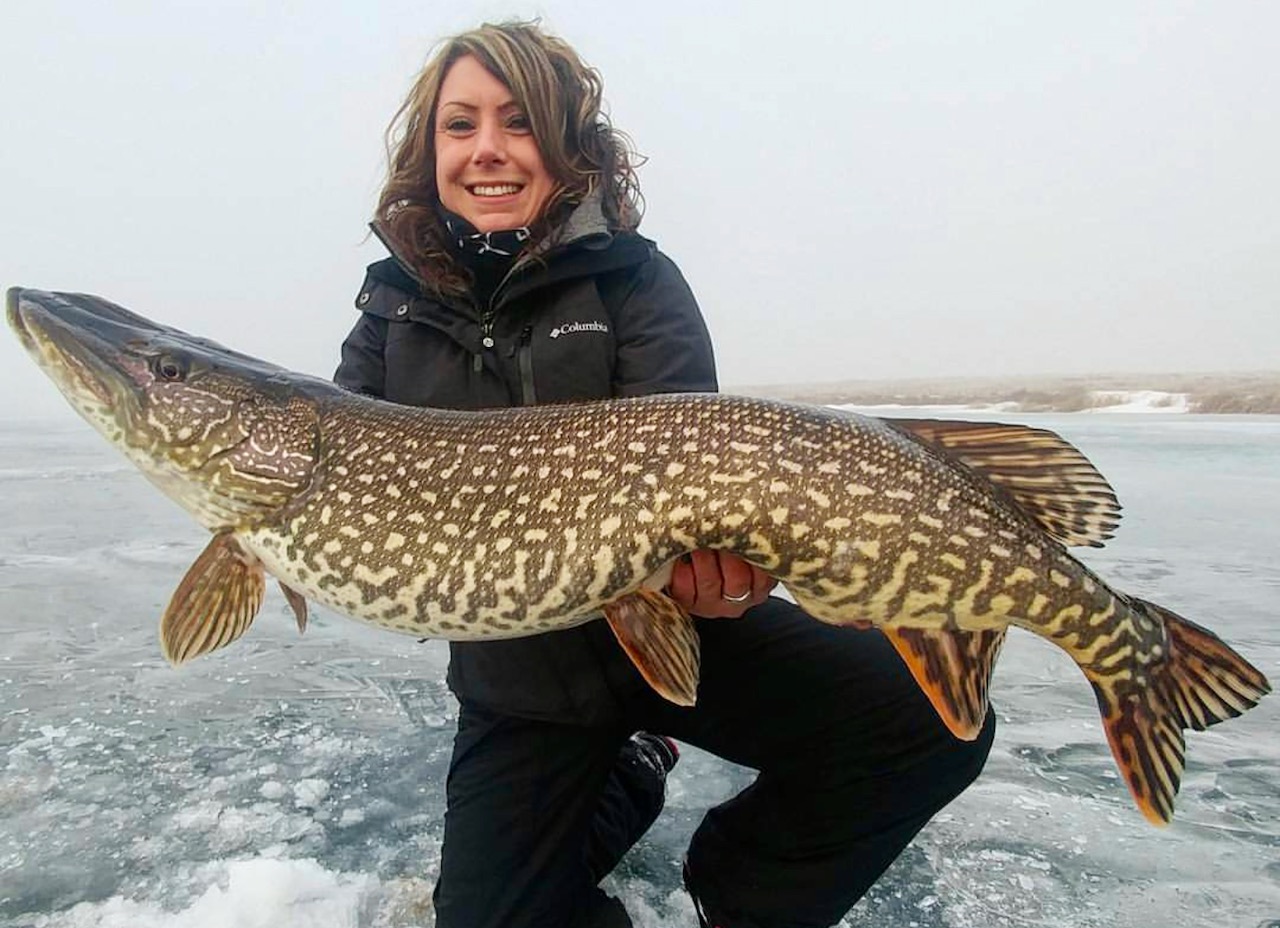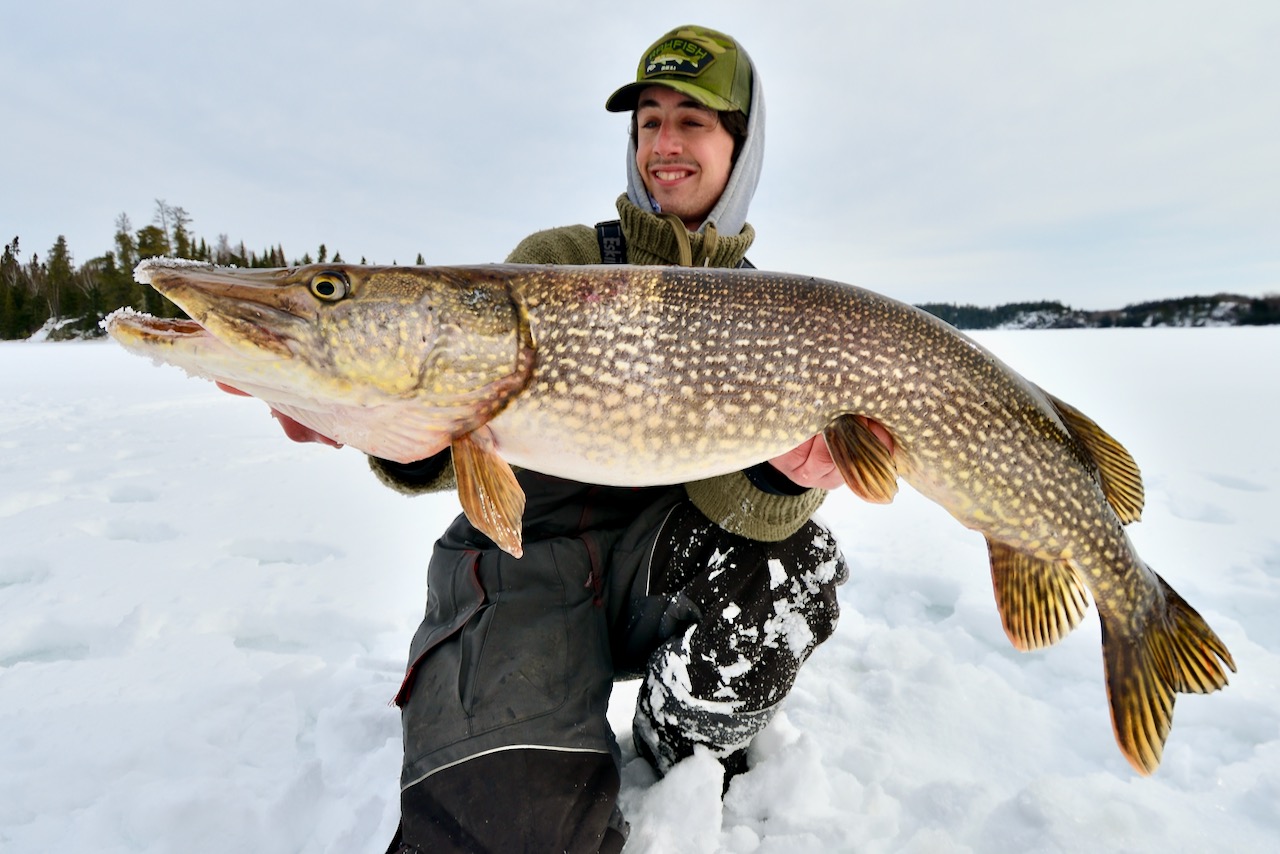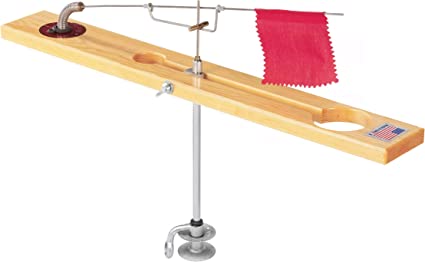PRO PIKE PLOYS
Expert wintertime techniques for hauling more gigantic northerns through the ice
Advertisement

#4 WORK THE WEEDS
Of course, no discussion about ice fishing for pike would be complete without getting into the weeds. It’s the place to be when a lake is shallow with no deepwater structures, and devoid of pelagic forage such as whitefish, ciscoes and rainbow smelt. Even in lakes that offer all of those things, however, pike will still crowd into grassy cover at last ice as they stage to spawn. But not just any weeds will do.
“Pike are fussy about the density of the aquatic vegetation,” says Casselman, pointing to some interesting Dutch studies on pike and prey behaviour. “If the vegetation was too dense, pike were unable to control a burgeoning prey base. We know, of course, that pike predation involves an edge effect, normally preying out of the edge of weedbeds.”
Advertisement
Out of the 195 pike caught during the Dutch research, more than half were caught in areas with less than 35 per cent weed cover. The conclusion? If the weeds are too thick, you won’t find the pike there.
During his own research in several northeastern Ontario lakes, Casselman also discovered the density of weed growth in a lake strongly influences the population of pike, and their ultimate size. In short, he found you are more likely to catch a trophy-sized pike in a lake or reservoir with plenty of open water and tapering weed edges, than in a lake that resembles Georgia’s Okefenokee Swamp. When it comes to weeds and pike, you can definitely have too much of a good thing.
Advertisement
BONUS TIP: BLOCK ’EM IN
Advertisement
If I’m ice fishing a jagged weedline, I drill my holes at the tip of weedy points and along inside turns. But if the edge is fairly straight, as is often the case when the grass grows along a contour, I’ll place my tip-ups (above) perpendicular to the weedline. That way, the pike will run into at least one of my dead baits, no matter how they follow the edge.


